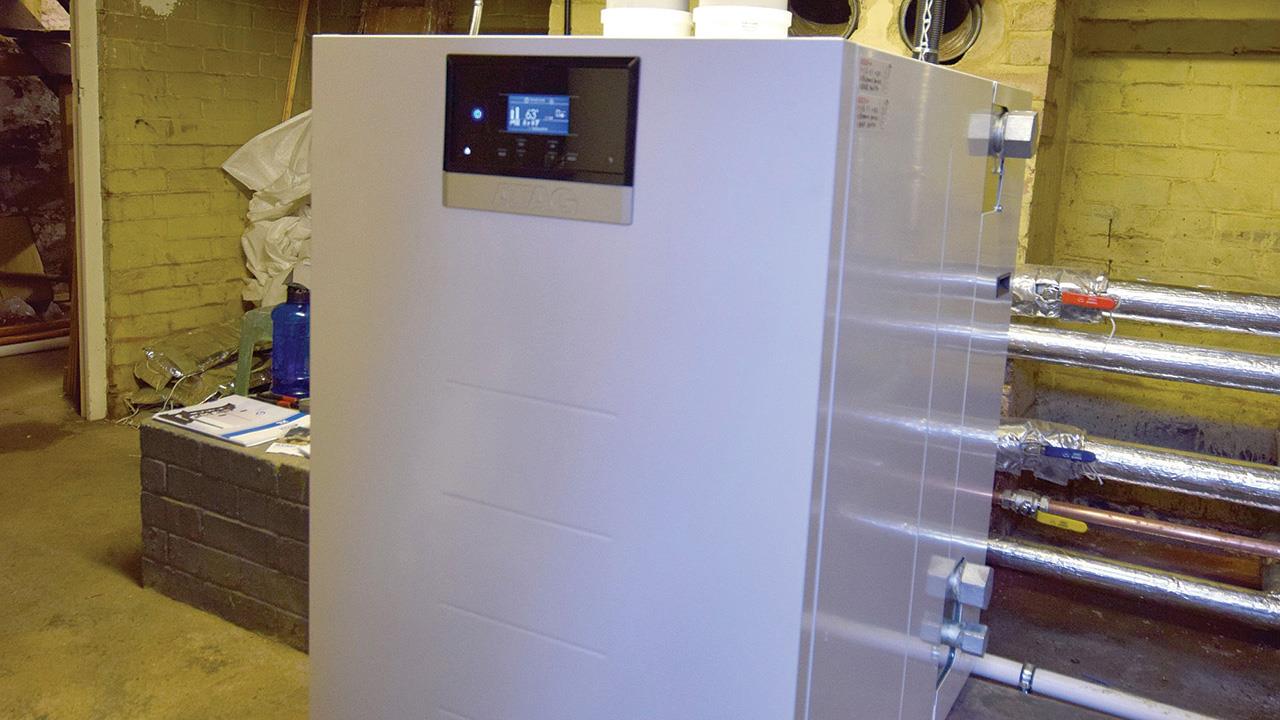

It is common knowledge that the commercial sector is under increasing pressure to tackle new energy efficiency targets for buildings – with heating systems facing particular scrutiny. Fortunately, modern condensing boilers reduce carbon and NOx emissions, boosting a project’s overall levels of efficiency, while helping improve air quality in built-up areas.
However, there are many options now available in the refurbishment market, especially when it comes to replacing outdated light commercial heating systems. As a result, installers and contractors need to be aware of the importance of the core components inside modern units. After all, technology has advanced to a stage where condensing boilers can deliver incredibly high efficiencies and impressively low NOx emissions, particularly in terms of light commercial wall-hung and floor-standing products.
So, what exactly are these essential elements that ensure optimum levels of performance? Well, at the top of the list is the heat exchanger. While this component lies at the heart of every boiler, its overall functionality and performance is influenced by the material from which it is made. Although aluminium versions exist, we recommend stainless steel as the heat exchanger metal of choice, as not only is it renowned for enhancing reliability, but it also maximises direct heat transfer.
Plus, if a specially configured network of pipes is present inside the heat exchanger, this further heightens heat transfer and levels of condensation. This winning combination enables the latest boilers to achieve a gross seasonal efficiency up to 96.5% (in accordance with the Non-Domestic Building Services Compliance Guide).
Reliability can be further improved when there are two heat exchangers present inside a single boiler. A dual heat exchanger product – such as ATAG Commercial’s XL-F and XL-W models – provides light commercial applications with the advantage of built-in backup within one unit, as each heat exchanger can operate independently of the other.
Built-in redundancy benefits applications that cannot afford to be without heating or hot water. For example, installing a product with this feature at a care home or on healthcare premises ensures residents or patients can still be looked after and kept warm without suffering any ill effects while waiting for boiler maintenance or repair.
Of course, overall efficiency is not determined by the heat exchanger alone. While they are designed to enhance transference of thermal energy from the burner into the system water, in order to achieve maximum absorbance of heat, the water’s turbulence and flow rate are equally vital; and this is where the pump comes into play.
The most advanced light commercial boilers use a modulating circulation pump, so the water inside the heat exchanger is kept in a turbulent state. Maintaining turbulence, by agitating the water flow, removes any insulating build-up between the heated water and the wall of the heat exchanger; doing so ensures a rapid and efficient transfer of heat.
Because the pump is sending water around a small, closed system (i.e. between the boiler and the low loss header or heat exchanger, depending on the application), it does not expend a lot of energy. Furthermore, the turbulent flow of the water assists in preserving the overall lifespan of the heat exchanger itself, as it reduces precipitates being deposited on the heat transfer surface.
Light commercial boilers, including our XL-W and XL-F units, have intelligent modulating pumps built in as standard. These constantly monitor the flow rate, allowing the heat exchanger to reach and maintain its set-point temperature, while still minimising energy input.
Another key factor in the quest for enhanced energy efficiency, especially when replacing aged light commercial products, is minimising any harmful exhaust gases – mainly the NOx emissions. Installers should look to fit boilers that feature specially designed combustion zones within the heat exchanger, as these will reduce any NOx and CO emissions accordingly.
Modulation also aids energy saving, given that a boiler’s heat requirements differ from season to season (with demand naturally higher during the winter months). Indeed, wide modulation ratios (i.e. a unit’s ability to reduce its maximum output to its minimum output) improve efficiency, while simultaneously reducing wear and tear on internal components. Boilers are deemed to have an outstanding modulation ratio at 1:10 – when the minimum output is one-tenth of the maximum output.
Finally, controls aid energy savings and efficiency even further, as demonstrated by the growing number of commercial boilers now being produced with built-in cascade controls. Incorporating these as part of the main boiler eliminates the need for any additional, external devices – but bear in mind that enhanced connectivity options allow for simple integration with any building management systems.
Ensuring compatibility with common data protocols used in building automation (including gateways to BACnet, MODbus, LONbus, and KNX) not only supports BMS integration, but also helps optimise a system’s overall efficiency and performance.
So, modern boilers have certainly come a long way during the last decade, evolving to a level where energy efficiency is maximised without compromising reliability or performance. The latest wall-hung and floor-standing models now boast incredibly low CO and NOx emissions, which successfully translate into significant savings for the premises where they are installed.
Thanks to the high quality components that now make up these state-of-the-art boilers, the future of the light commercial sector looks healthy indeed.
If you'd like to keep up-to-date with the latest developments in the heating and plumbing industry, why not subscribe to our weekly newsletters? Just click the button below and you can ensure all the latest industry news and new product information lands in your inbox every week.